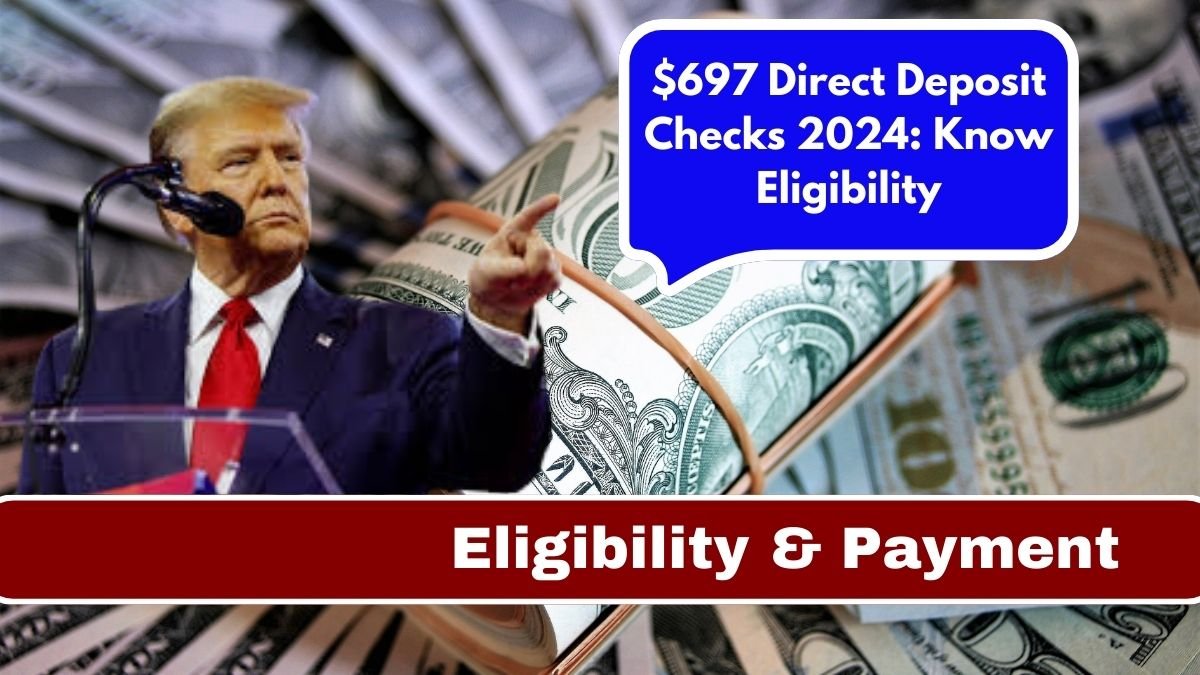If you’ve heard the buzz about $697 direct deposit checks in 2024, you might be wondering what exactly they are, who’s eligible to receive them, and when you can expect the payments. Don’t worry, we’re about to break it down for you in simple terms. Whether you’re already familiar with government checks or just trying to figure out if you qualify, this guide will walk you through everything you need to know.
What Are the $697 Direct Deposit Checks?
The $697 direct deposit checks refer to payments that are issued as part of various government assistance programs aimed at helping people who are struggling financially. These payments are direct deposits, meaning the money is transferred directly into the recipient’s bank account rather than through a physical check in the mail.
In 2024, several state and federal programs are sending out these payments, which are part of efforts to support low-income households, seniors, and others who may need a financial boost. The $697 figure is one of the common amounts tied to these direct deposit payments, though it may vary depending on where you live or the specific program you’re applying for.
Who Is Eligible for the $697 Direct Deposit Checks?
Eligibility for these payments can depend on several factors, including income level, age, and state of residence. Generally, the people who qualify are those who are part of assistance programs like Supplemental Security Income (SSI), Temporary Assistance for Needy Families (TANF), or other government relief initiatives.
For instance, SSI recipients, low-income families, and seniors may be eligible for these checks. If you’re currently receiving any government benefits or assistance, there’s a chance you could qualify. The best way to know for sure is by checking with the relevant agency, such as the Social Security Administration or your state’s welfare office, to confirm if you’re eligible.
How Do the $697 Direct Deposit Payments Work?
These direct deposit payments are sent automatically to individuals who meet the eligibility criteria. They are typically processed through direct deposit systems, meaning you don’t have to wait for a paper check to arrive in the mail.
Once your eligibility is confirmed, the payment will be deposited directly into the account you provided. This saves time and ensures you get the money more quickly and securely.
When Will the $697 Payments Be Sent?
The exact dates for the $697 payments can vary depending on the program and the government agency responsible. For example, the timing might be different for SSI recipients, or other assistance programs that are state-specific.
In general, direct deposits for these payments are made on a set schedule, often monthly, or as part of a quarterly disbursement, depending on the program. Some recipients may see the payments show up at the beginning of each month, while others may get them in the middle of the month.
Let’s take a look at a simplified breakdown of potential payment schedules based on the most common eligibility categories:
| Eligibility Program | Payment Frequency | Estimated Payment Dates for 2024 |
|---|---|---|
| Supplemental Security Income (SSI) | Monthly | 1st to 3rd of each month |
| Temporary Assistance for Needy Families (TANF) | Monthly or Quarterly | Mid-month or last working day of the quarter |
| State-specific Assistance Programs | Monthly or Bi-monthly | Varies by state (check with local agency) |
Why Are These Payments Important?
The $697 direct deposit checks are vital for many recipients, especially for those who may struggle to make ends meet. These payments help cover basic living expenses, such as food, utilities, or healthcare. For low-income families or seniors on fixed incomes, these payments can be a lifeline, providing extra financial support in difficult times.
Many people rely on these payments to supplement their income, especially during times of inflation or when other sources of financial support may be limited. Knowing when you can expect these payments and confirming your eligibility can help you better manage your finances.
How Can You Check If You’re Eligible?
Checking if you’re eligible for these payments is easy! If you’re already enrolled in a government assistance program like SSI or TANF, you may automatically qualify for the $697 payments. However, it’s always a good idea to double-check. You can visit the official website of the program you’re enrolled in or reach out to your local welfare office or Social Security office for more detailed information.
If you’re unsure whether you qualify or if your income has changed recently, it’s best to speak with a representative. They can provide clear answers on how eligibility works and what you can do to ensure you’re receiving the benefits you deserve.
Conclusion
In summary, the $697 direct deposit checks are part of government programs designed to support those in need. If you meet the eligibility requirements, you could receive these payments directly into your bank account. Make sure to check your eligibility and stay on top of the payment dates to manage your finances effectively. These payments can make a big difference, offering much-needed assistance to help you get through tough times.
FAQs
How do I apply for the $697 payment?
You generally don’t need to apply separately if you’re already enrolled in a qualifying program like SSI or TANF. However, it’s worth confirming your eligibility with the relevant agency.
Can I receive the $697 payment if I don’t get SSI?
It depends on your state and income. Some state-specific programs offer similar payments, so check with your local welfare office.
How often will I receive the $697 payment?
The payments are typically made monthly or quarterly, depending on the program you qualify for.
What should I do if I haven’t received my $697 payment?
Check with the agency managing your program (e.g., Social Security or your state’s welfare office) to ensure your payment information is up to date.
Will the $697 payments continue after 2024?
This depends on the government’s budget and the continuation of the programs. It’s always best to check for updates from the relevant agencies.





